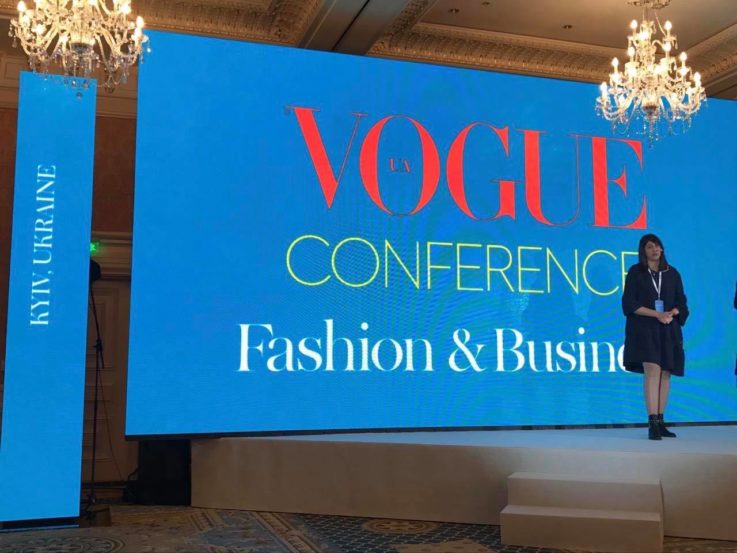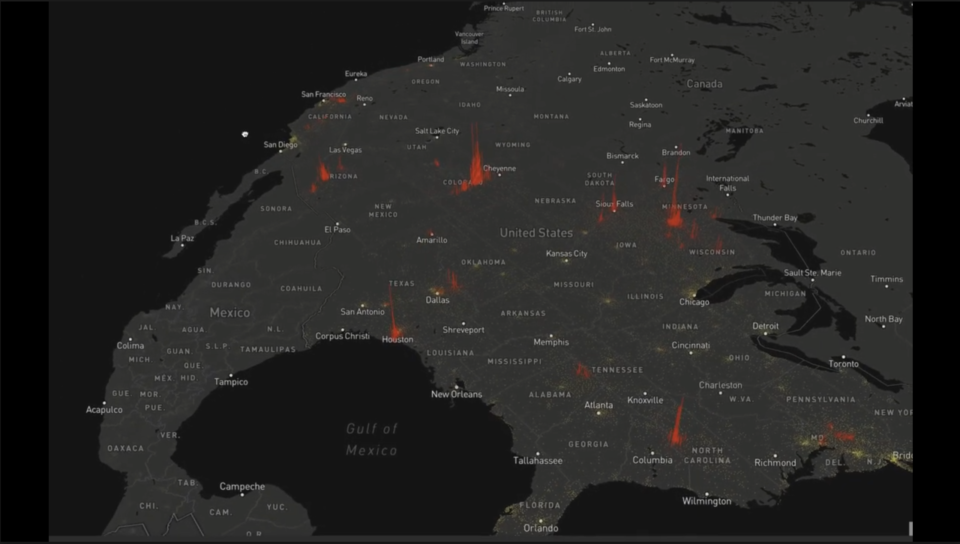Why Awear’s new vision for loyalty focuses on usage not purchase

One of the most interesting retail developments of last year was undoubtedly Tommy Hilfiger’s Xplore project. This range of smart-chipped clothing could tell when it was being worn and rewarded customers with points for each usage.
While Tommy Hilfiger was the brand, behind-the-scenes the concept came from Awear Solutions. Focused on smarter engagement between brands and consumers, Awear wants to help us better understand how customers interact with what they buy, so we can communicate with them for effectively.
With the one-year Xplore programme now having come to its end, we sat down with Awear CEO Liron Slonimsky to find out more about the technology concept and why loyalty should be focused on usage not purchase.
Liron Slonimsky, CEO, Awear
Can you describe what Awear does in a nutshell?
We are a smart engagement platform that rewards people for wearing your item. The currency of loyalty today is based only on purchases. We’re trying to create a new currency for engagement based on usage.
The idea is that your item of clothing has a smart chip in it and the more you use your item the more points you get. The process is automatic. You only need to activate your smart item once. From that moment on you don’t need to open the app again and you will still collect points.
When you visit certain locations that are important for the brand to increase visibility in you can earn even more points. It could be at Coachella Festival. It can be a stadium or a university or it could just be the park. It doesn’t matter.
We can understand usage and different type of usage. Are you wearing the brand casually or for business? Do you love wearing it to parties or to parks? Based on the way that you experience the brand we then know how to communicate with you. Many of us can have exactly the same item but we may use it differently.

Where did the idea come from?
When we started six years ago, wearable technology was quite new, and people didn’t really understand the Internet of Things. It was just like a buzzword, but no one really understood it. We really needed to educate the market and as a small start-up that’s almost impossible.
We started with trying to create a Shazam for fashion based on chips not image recognition. You would have a chip inside your garment that you could scan from a distance and identify the item.
We did a very tiny pilot with DKNY and then we started approaching fashion brands. They wanted to be part of it, but they wanted to do it at small scale. The main challenge with that was that we need critical mass for it to work – we needed millions of items.
So, we asked the companies what was their main challenge? They said loyalty of Generation X. At that point, we wanted to understand the reasons for that, so we researched and met with over 200 students in the US.
We realised that it’s true they’re not really loyal to a specific brand. They are more loyal to a specific sphere like luxury. They differentiate between the tiers, but they don’t really care about the brand. We looked to see what was missing and we realized it was the instant gratification component.
We needed to come up with a solution that is based on a combination of visibility and instant gratification. The instant gratification is the points. One item gives you access because you start collecting points immediately.
Why did you choose to work with Tommy Hilfiger?
Fashion is the most old-fashioned industry. The reason we wanted to communicate with Tommy Hilfiger is because we knew that they are very innovative compared to other brands.
They’re also using their logo and they really care about their logo. There are some brands that are trying to hide their logo while Tommy is putting it out there. The whole idea of usage and visibility really aligned with the branding of Tommy Hilfiger because they are using their logo and we see that it’s visible. That’s why they were our first option.
How did customers respond to the garments?
We got really positive feedback from the customers. Many customers bought more than one item because they got addicted to the points system. The more items you had the more points you got.
We ran the programme for a year. People were still accumulating points right up to the end because they wanted to get more rewards before the programme stopped. The consumers received a huge amount of experiences and rewards.

How did you communicate with customers?
They were able to accumulate points without opening the app, but we would use push notifications to let them know they had enough points to redeem rewards.
The more active players would use it like Pokemon Go. They would open the app and source virtual spots in their city where they could go and get extra points. We needed to make sure that the spots were close enough for them and they had enough spots to work with their items.
It was a big thing to be able to keep people engaging with clothes that they bought a season or two ago. We had a 53% retention rate to the app after six months, which showed that people were wearing the items.
Were there any major learnings from the Tommy Hilfiger project?
We learnt a lot and we live changed things as we went. If something wasn’t working, we changed it immediately. We didn’t wait for the end of the project. It’s easy because it’s an app, so we could update one page, or we could do some A/B testing.
We changed the main screen while it was live because we saw that people cared more about their points then seeing their rewards. At the beginning, the main screen was a rewards screen, but we changed it to make the points the main focus. People actually entered the app more often to check their points.
How much of the process was data-driven?
To create the right engagement, you need the data. You need to understand whether people are wearing the item and how, because you want to offer items that are relevant for their usage.
Aggregate data is really important. It’s not about one person. It’s about seeing if a specific jersey is being worn more to pubs or restaurants or schools. You can then use this data to send smart recommendations based on usage.
Do you think there is a place for a platform that lets us choose what data we share about us and with who?
I don’t think there is a place for this. We don’t control all the data that is collected on us.
The main question that people ask themselves is what is in it for me and what do I get out of it? You’re willing to give all your data to Snapchat because you want to chat with your friends and you want to delete them after and you want to create these cool emojis. You’re willing to give your data to Instagram because you want likes. I am personally willing to give my data to Google because I want more relevant search results.
I also notice that nobody is really looking at me. I understand that there is a big machine that takes this data and optimises my experience. It’s very psychological. You don’t want to work with a company you don’t trust.
To really disconnect though, you need first of all to throw away your smartphone. The second thing you need to do is disconnect from all emails. The third things you need to do is stop searching online. The fourth thing you need to do is stop being on social media.
Even if you’re doing this, you’re still not anonymous because other data is being collected on you. For example, when you enter the mall the cameras are taking pictures of you, or when you go to the airport security is taking your fingerprints. This is the world we live in.

Do you have a vision for how the store might be different as a result of smart garments?
Many people are trying to solve the smart store right now. Some companies are doing it very well, but you notice that the stores are still the same stores. I think there is something really right about the way that stores are being structured. I don’t think that smart clothing will change that much. It might help you to check-out, but the experience itself I think is going to be the same experience.
What’s next for Awear?
After the launch with Tommy Hilfiger, many sports clubs and sponsors approached us and said our platform would be a great fit for them.
As a small start-up, when we measured our market potential, we saw that sports would make more sense for us to focus on at present. It’s pretty similar, because everything about fashion and sports is to see and be seen wearing the logo – whether it’s your team’s logo or the brand’s logo.
Unlike fashion, in sports the fans are very loyal. They’re walking advertisements. Although the sponsor prints their logo on the team’s shirt, they are not aware of their logo visibility outside of games. We can give the sponsors this information.
The fans benefit because whenever they wear the team’s shirt they get benefits and the team benefits because they get a closer relationship with the fan. They don’t just communicate with the fan during the game, but they know how to communicate with the fan outside of it based on usage.
I think we will go back to fashion in the future, but I think it will take some time for fashion to innovate like this. They’ll get there but I think it will be a very painful process. They know that they need to adopt technology. They understand that they need to innovate to have the right to exist. I think sport will open the market for fashion.
It’s a process. I tell my team we haven’t changed the world yet, but we’ve changed a concept.
Images courtesy of Awear
How has the smartphone transformed the way we shop?
Want to go straight to the hottest retail technologies, latest disruptive thinking and simplest new ways to lower costs and boost sales? Transform your team’s thinking using Insider Trends’ little black book. Find out how here.



